What Is Pharmaceutical Waste?
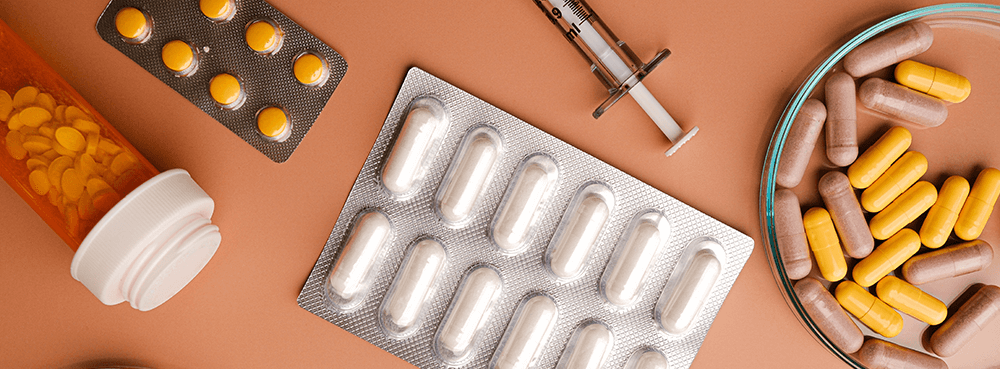
With an estimated £300 million of NHS-prescribed medicines wasted each year in the UK, understanding what pharmaceutical waste is and how to reduce it is rather important.
Pharmaceutical waste is a major concern in healthcare, not only because of the volume of it but also because improper handling can pose risks to both public health and the environment. With a focus on UK regulations and best practices, this guide offers a detailed overview of what pharmaceutical waste is, the different types, and how to manage and dispose of it safely.
TOPICS WE WILL COVER:
1 / Understanding Pharmaceutical Waste
2 / Types of Pharmaceutical Waste
3 / What Goes in a Pharmaceutical Waste Container?
4 / How Much Pharmaceutical Waste Is Generated Per Year?
5 / Ways to Reduce Pharmaceutical Waste
6 / Regulatory Frameworks for Pharmaceutical Waste Management in the UK
7 / Best Practices for Pharmaceutical Waste Management
8 / Environmental Impact of Pharmaceutical Waste
9 / Sharpsmart’s Pharmaceutical Waste Disposal Services
10 / Future Trends in Pharmaceutical Waste Management
11 / Partner with Sharpsmart for Safe, Compliant Medical Waste Disposal
Understanding Pharmaceutical Waste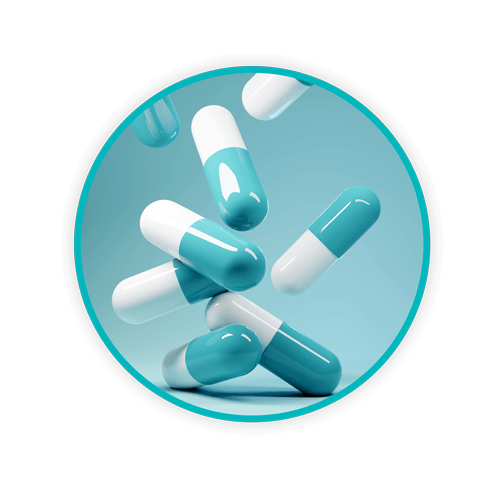
Pharmaceutical waste refers to any medication or pharmaceutical product that has become unusable, whether due to contamination, damage, expiration, or being leftover.
According to the UK Environment Agency, this waste stream includes:
- Expired or unused medicines
- Contaminated medications
- Partially used vials or containers of medicines
- Discontinued or recalled drugs
- Waste materials contaminated with pharmaceuticals
It’s crucial to understand that this waste stream is not just limited to medications themselves but also includes items heavily contaminated during pharmaceutical handling, such as bottles, vials, and personal protective equipment (PPE).
Types of Pharmaceutical Waste
Pharmaceutical waste can be broadly categorised into two main types:
- Hazardous Pharmaceutical Waste: This includes medications that are toxic, flammable, corrosive, or reactive. Examples include cytotoxic/cytostatic drugs, certain antibiotics, and controlled substances.
- Non-Hazardous Pharmaceutical Waste: Non-hazardous pharmaceutical waste includes medications that don’t meet the criteria for hazardous waste but still require proper disposal. Examples include over-the-counter medications and some prescription drugs.
What Goes in a Pharmaceutical Waste Container?
So, what goes in a pharmaceutical waste container?
Proper segregation of pharmaceutical waste is crucial for compliant and safe disposal. Here’s a general guide on what goes in different pharmaceutical waste containers in the UK:
Blue-lidded containers
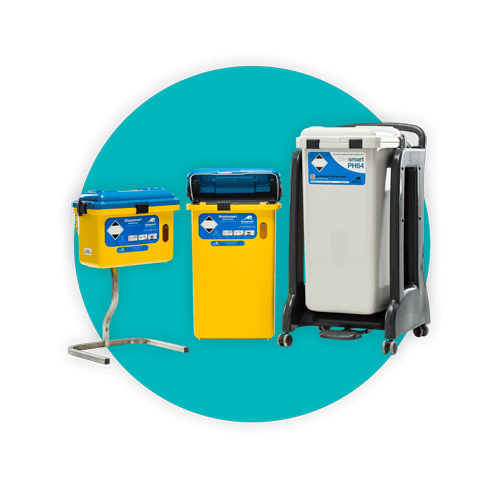 Blue-lidded waste containers are used for non-hazardous pharmaceutical waste (non-cytotoxic/cytostatic medicine waste). This includes:
Blue-lidded waste containers are used for non-hazardous pharmaceutical waste (non-cytotoxic/cytostatic medicine waste). This includes:
- Non-hazardous medicines
- Out-of-date, unused, or unwanted pharmaceutical drugs
The container should be clearly labelled with:
- “Pharmaceutical Non-Hazardous Waste for incineration”
- “Non-Cytotoxic and Non-Cytostatic. Mixed Form”
- EWC 18 01 09
Purple-lidded containers
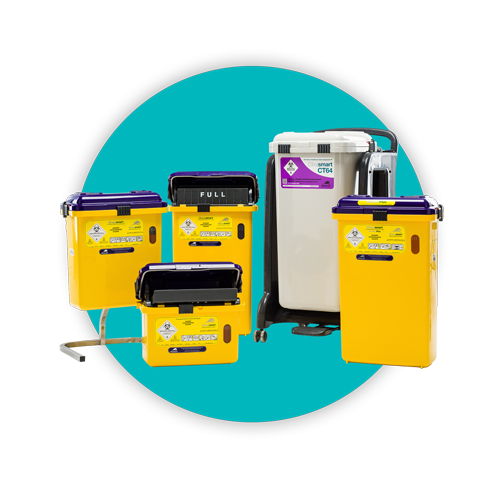 Purple-lidded waste containers are used for hazardous pharmaceutical waste, specifically cytotoxic and cytostatic medicines. This includes:
Purple-lidded waste containers are used for hazardous pharmaceutical waste, specifically cytotoxic and cytostatic medicines. This includes:
- Medicines that are acutely toxic, carcinogenic, mutagenic, or toxic for reproduction
- Certain hormone-based preparations and antimicrobial substances
The container should be clearly labelled with:
- “Pharmaceutical Hazardous Waste for incineration”
- “Cytotoxic and Cytostatic. Mixed Form”
- EWC 18 01 08*
These are general guidelines, though it’s important to note that the specific colour coding and labelling requirements can vary slightly between different NHS Trusts and healthcare providers, but these are the general guidelines provided by the NHS SPS.
How Much Pharmaceutical Waste is Generated Per Year?
The exact amount of pharmaceutical waste generated in the UK is challenging to quantify due to variations in reporting and classification.
However, according to a study published in the BMJ, it’s estimated that up to £300 million worth of NHS-prescribed medicines go to waste every year in England alone.
This figure underscores the importance of proper management strategies for pharmaceutical waste in healthcare settings, not only for environmental protection but also for cost efficiency.
Ways to Reduce Pharmaceutical Waste
Reducing pharmaceutical waste is crucial for both environmental protection and cost-efficiency in healthcare. Here are some strategies recommended by NHS England supported by several case studies:
1. Implement medication reviews: Conduct regular medication reviews, especially for care home residents, to optimise prescribing and reduce unnecessary medications.
2. Optimise prescribing practices: Encourage prescribers to consider appropriate quantities and durations of medication courses, as demonstrated in the various care home initiatives.
3. Provide patient education: Educate patients on proper medication use and waste reduction.
4. Improve communication: Enhance communication between healthcare providers, patients, and care facilities to ensure appropriate prescribing and use of medications.
5. Monitor and measure outcomes: Track the results of waste reduction initiatives, including both cost savings and improvements in patient care.
6. Invest in Waste Segregation Training: Ensure all staff are properly trained in waste segregation to minimise contamination and improve recycling rates.
7. Address polypharmacy: Pay special attention to patients taking multiple medications, as they are at higher risk for medication-related issues and waste.
Regulatory Framework for Pharmaceutical Waste Management in the UK
The management of pharmaceutical waste in the UK is governed by several key regulations:
- The Environmental Protection Act 1990: This act provides the framework for waste management in the UK.
- The Hazardous Waste Regulations 2005: These regulations define hazardous waste and set out the requirements for its proper management.
- The Controlled Drugs (Supervision of Management and Use) Regulations 2013: These regulations provide specific guidance on the management of controlled substances.
- The Waste (England and Wales) Regulations 2011: These regulations implement the revised EU Waste Framework Directive.
Healthcare facilities must ensure compliance with these regulations to avoid penalties and protect public health and the environment.
Best Practices for Pharmaceutical Waste Management
Effective pharmaceutical waste management involves several key steps:
 1. Proper Identification and Segregation: Accurately identify and segregate pharmaceutical waste based on its characteristics (hazardous vs. non-hazardous).
1. Proper Identification and Segregation: Accurately identify and segregate pharmaceutical waste based on its characteristics (hazardous vs. non-hazardous).
2. Secure Storage: Store pharmaceutical waste in designated, secure areas to prevent unauthorised access.
3. Appropriate Packaging: Use suitable containers that are clearly labelled and comply with transportation regulations.
4. Accurate Documentation and Waste Transfer Notes: Maintain detailed records of waste generation, storage, and disposal. A crucial part of this documentation is the waste transfer note.
According to the UK government’s guidance on waste transfer notes, a waste transfer note is required for each load of non-hazardous waste that leaves your premises. For pharmaceutical waste classified as hazardous, a consignment note is required instead.
These documents must:
- Describe the waste and any processes it has undergone
- State the quantity of waste
- State how it’s contained (e.g., in a bin, bag, or skip)
- State the time and date the waste was transferred
- Provide the names and addresses of both parties transferring the waste
- State whether the transferor is the producer or importer of the waste
- State the standard industrial classification (SIC) code of the transferor
Both the waste producer and the waste carrier must keep copies of waste transfer notes for at least two years. This documentation is crucial for demonstrating compliance with waste regulations and can be requested during environmental audits.
5. Staff Training: Regularly train staff on proper waste handling procedures and regulatory requirements.
6. Use of Authorised Waste Carriers: Ensure that pharmaceutical waste is collected and transported by licensed waste carriers.
7. Proper Disposal Methods: Use appropriate disposal methods, such as high-temperature incineration for hazardous pharmaceutical waste.
Environmental Impact of Pharmaceutical Waste
Improper disposal of pharmaceutical waste can have severe environmental consequences.
A 2024 study by the University of York and the Rivers Trust has uncovered significant pharmaceutical pollution in England’s National Parks, raising serious environmental and public health concerns.
Key Findings:
- Pharmaceuticals, including antidepressants, antibiotics, and diabetes treatments, were detected in 52 out of 54 river sites across all 10 national parks.
- Some parks, like the Peak District and Exmoor, had drug concentrations higher than those in cities like London, posing a risk to wildlife and humans.
- Pollution levels were harmful to fish, invertebrates, and algae, and antibiotics in some rivers exceeded levels that could foster antimicrobial resistance.
Causes:
- Improper disposal of medications and outdated wastewater treatment systems in rural areas contribute to the contamination.
- Seasonal tourist surges in national parks also place extra strain on sewage infrastructure, exacerbating pollution.
Environmental Risks:
- Rivers in these parks, with their low flow and older treatment facilities, are more vulnerable to pollution, making it difficult for contaminants to dilute effectively.
Sharpsmart’s Pharmaceutical Waste Disposal Services
Sharpsmart UK offers comprehensive and compliant solutions for pharmaceutical waste disposal.
With over 30 years of experience in clinical waste disposal, Sharpsmart has revolutionised healthcare waste management through innovative technologies and a commitment to safety and sustainability. Sharpsmart’s pharmaceutical waste disposal services include:
- Customised waste segregation systems
- Reusable containment solutions that reduce environmental impact
- Secure collection and transportation of pharmaceutical waste
- Compliant treatment and disposal methods
- Detailed tracking and reporting for regulatory compliance
By partnering with Sharpsmart, healthcare facilities can ensure their pharmaceutical waste is managed safely, efficiently, and in full compliance with UK regulations.
Our expertise in navigating complex regulatory requirements and commitment to sustainability makes us an excellent choice for healthcare facilities looking to improve their clinical waste management practices.
Future Trends in Pharmaceutical Waste Management
As the healthcare sector continues to evolve, so too will the approaches to managing pharmaceutical waste. Some emerging trends include:
1. Advanced Tracking Technologies: Implementation of RFID and blockchain technologies for improved waste tracking and accountability.
2. Green Chemistry: Development of pharmaceuticals that are more environmentally friendly and easier to break down.
3. Circular Economy Approaches: Exploring ways to recycle or repurpose certain pharmaceutical waste components.
4. Personalised Medicine: Advancements in personalised medicine may lead to more precise dosing, potentially reducing waste.
5. AI-Driven Inventory Management: Use of artificial intelligence to optimise stock levels and reduce expired medications.
Partner With Sharpsmart For Safe, Compliant Medical Waste Disposal
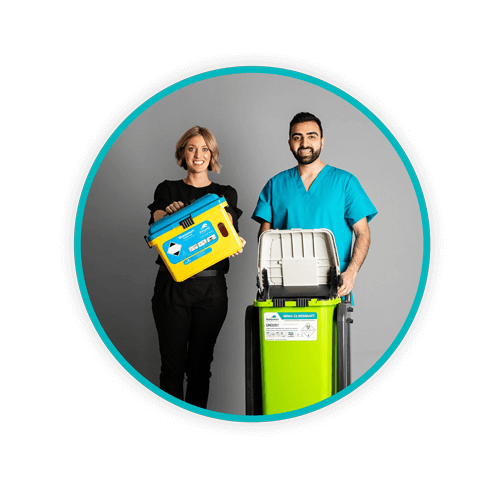 Effective management of pharmaceutical waste is crucial for protecting public health and the environment. By understanding what constitutes pharmaceutical waste, following proper disposal procedures, and adopting innovative solutions, healthcare facilities can significantly reduce the risks associated with hazardous and non-hazardous medicinal wastes.
Effective management of pharmaceutical waste is crucial for protecting public health and the environment. By understanding what constitutes pharmaceutical waste, following proper disposal procedures, and adopting innovative solutions, healthcare facilities can significantly reduce the risks associated with hazardous and non-hazardous medicinal wastes.
Partnering with experienced providers like Sharpsmart UK ensures that pharmaceutical waste is handled safely, sustainably, and in compliance with all relevant regulations. As the UK healthcare sector continues to grow and evolve, so too will our strategies for managing healthcare waste, driving towards a safer and more sustainable future.
Contact us today for a free consultation and empower your facility with industry-leading pharmaceutical waste services.
Let's Talk!
Your time is valuable, and we don’t want to play hard to get. You can either phone us directly on the details listed on our contact page, or feel free to fill out this short form and one of our team members will get back to you as quickly as possible.
